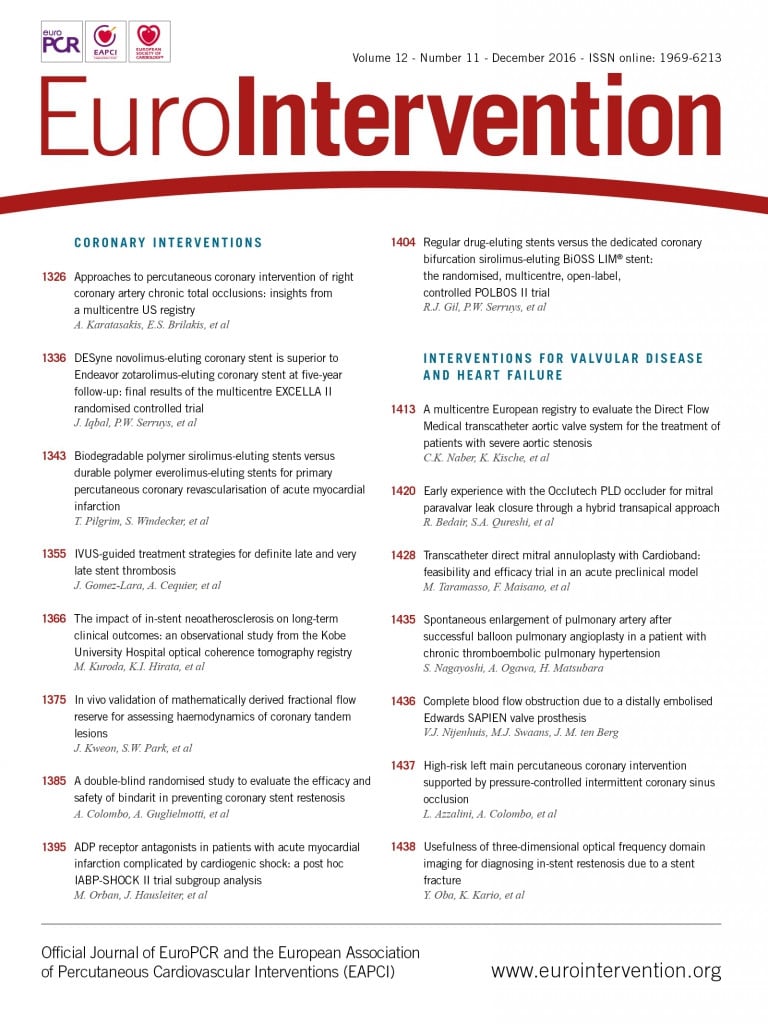
When a nurse prepares the cathlab and a patient for coronary angiography or percutaneous coronary intervention (PCI), it is still not unusual at our centre to hear a fundamental preliminary question: “radial or femoral?”. I must say that the answer is now almost invariably “radial”. However, I remember the days when we decided to modify our default approach: it was not so many years ago, and it was not “swift and sound”.
For years, after the introduction of the radial approach by Campeau and Kiemeneij in the 1990s, the use of the femoral artery as default vascular access remained historically a must at our academic centre. Generations of nurses and interventional fellows have been trained over the years in an almost totally transfemoral environment, with radial arteries used only exceptionally and “on demand” in cases where peripheral artery disease, anticipated by weak pulses or the patient’s history, was perceived by the operator as an insurmountable barrier (incidentally, patients who have poor femoral arteries may also be difficult radial candidates!). Adding to the incomplete learning curve of some operators, such radial procedures frequently ended with a switch to femoral, generating frustration in all the cathlab staff, and –yes– some discomfort to the patient. That being said, all fellows at that time were educated to perform the best possible femoral puncture, with scrupulous fluoroscopic confirmation of the anatomic landmarks and mandatory control femoral angiography. We were genuinely convinced that for an interventional fellow it was much easier to start by puncturing larger femoral arteries rather then smaller radial ones. Haemostasis was typically obtained by femoral compression (which we ironically referred to as a “fellow-seal”), mostly performed by the same operator as a prudent reminder that a good compression is as important as a good puncture to reduce the incidence of vascular complications. At one point in time, the use of vascular closure devices became very popular, and in parallel the use of “fellow-seals” became infrequent. Transfemoral procedures represented our “comfort zone”.
Then there came a time when it was more and more evident that many centres and operators in Europe were already proficient in transradial PCI, and the evidence supporting the use of the radial route as a bleeding avoidance strategy suddenly became overwhelming. Therefore, as naturally as we previously transitioned from bare metal stents to drug-eluting stents, we felt it was time to make the transition from femoral to radial. Taking into account the unavoidable learning curve, the idea was to start the training process in summer, when the patient volume is slightly lower, to allow a smoother and easier period of adaptation for all the different operators and nurses involved. It goes without saying how difficult it is and how much persistence is necessary to modify an established routine, but we did it, exactly like many other hospitals around the globe. When I look at new-generation interventional fellows at our site, I appreciate how they rapidly become skilled in transradial coronary angiography, being able to overcome the most classic anatomic challenges. On the downside, the younger ones now seem uncomfortable when it comes to puncturing the femoral artery for whatever reason, and require the assistance of more expert operators. We are doing our best to maintain a femoral teaching programme in order to keep this competency alive, but it is not easy when the use of the femoral artery in procedures other than transcatheter aortic valve implantation has become so infrequent.
The potential for an increase in vascular complications by non-expert femoral operators in radial centres has recently been named Campeau’s paradox1. The issue has been at the centre of a heated debate this year in the field, fuelled by the publication of the MATRIX trial, where the radial and femoral accesses were compared in patients with acute coronary syndromes (ACS)2. With due respect to individual opinions, perhaps we can all agree that the radial access reduces access-site bleeding, is by far preferred by the patient and makes you feel more comfortable when using a combination of antithrombotic drugs. On the other hand, radial access does not fit one hundred percent of procedures, may be associated with longer procedural times (and door-to-balloon in ST-segment elevation myocardial infarction [STEMI]) and may in general be more demanding. A European consensus suggests that, before approaching ACS through the radial artery, an operator should have performed at least 250-300 transradial cases in stable patients3. The European guidelines give a I-A recommendation to using the transradial access in non-ST-elevation ACS4, which is consistent with the conclusions of the MATRIX trial and several meta-analyses (the latter showing significant reductions in bleeding and mortality). Because contemporary vascular access meta-analyses are largely dominated by the results of the MATRIX trial, there are still some attempts to undermine the conclusions of that trial by a number of arguments, including the abovementioned Campeau’s paradox. The most common criticism is that the results of MATRIX were driven by centres with a high radial volume, whereas the radial and femoral outcomes were similar in centres with a low to intermediate radial volume. Some interpret this statistically significant interaction as proof that disuse of the transfemoral access is a confounding and possibly limiting factor when it comes to treating ACS. Using this argument, they challenge the belief that the next European guidelines for STEMI, expected in 2017, should endorse transradial PCI as I-A, similar to guidelines for non-ST-elevation ACS. Apparently, with ~19,000 patients randomised in ACS trials and new studies on the horizon (NCT01398254), the topic is still subject to interpretation particularly in the STEMI setting. Indeed, the available body of evidence suggests that radial access provides safety and efficacy benefits in patients with ACS. Discussing the merits of the individual trials sometimes sounds like “not being able to see the forest for the trees”. It is possibly a balanced statement to admit that non-expert radial operators should remain in their comfort zone when more complex procedures are undertaken, and both experts and non-experts should be ready to switch to femoral access in circumstances that put patients’ safety in jeopardy.
I always like to hear the “radial or femoral?” question resonating in our cathlab because it reminds us and all fellows that “radial access should be the default approach” does not mean that all procedures will necessarily be transradial. The true challenge for interventional programmes is now to ensure competency in performing both radial and femoral access procedures.
Conflict of interest statement
The author has no conflicts of interest to declare.

